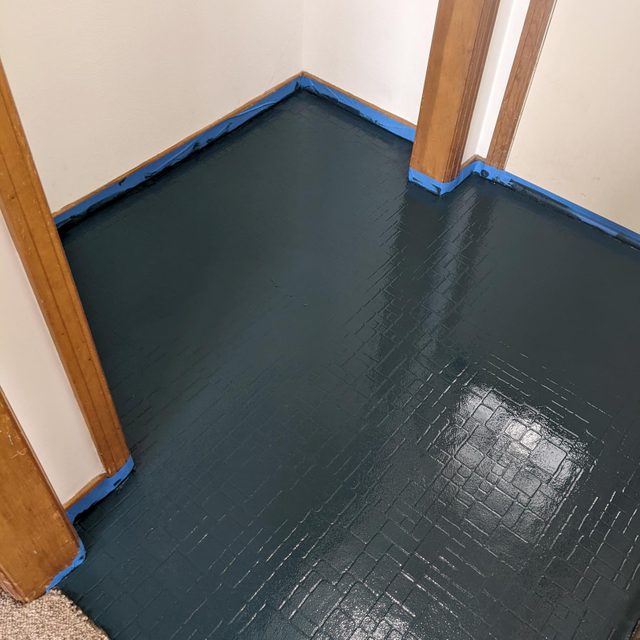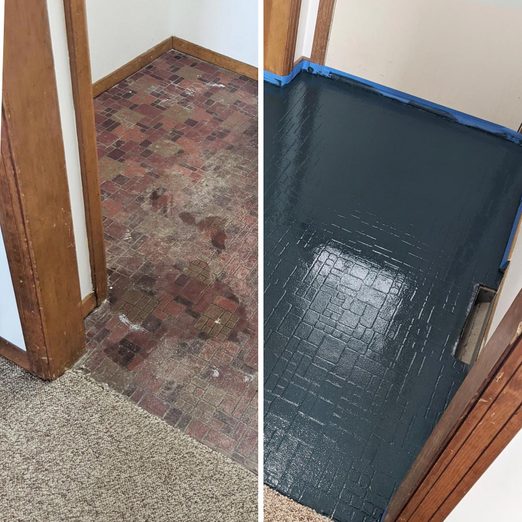How To Paint Vinyl Flooring
Updated: Jun. 14, 2023
Can you paint vinyl flooring? Yes! It's a budget-friendly, easy alternative to replacing it, bringing new life to tired vinyl floors.
2 hours
Beginner
$100 - $150
Introduction
Replacing outdated or worn-out flooring is a costly, time-consuming project that's not always feasible.
As we work to update every space in our 1970s colonial home, we're trying to be savvy with how we spend our time and money. The vinyl flooring in our small mudroom had certainly seen better days. I searched for a budget-friendly way to update it that would be beautiful and durable, but I wasn't sure — can you paint vinyl flooring?
Turns out you can, and I found the perfect product to do so. Rust-Oleum Home Floor Coating is specifically made for painting tile, vinyl and linoleum floors. It didn't require any cumbersome prep work like sanding or priming, so I completed the transformation in less than two hours over the course of two days. For a reasonable cost, I took my mudroom floors from dingy and dated to clean and modern.
Follow these step-by-step instructions to revitalize the floors in your own mudroom, kitchen, bathroom or elsewhere in your home.
Note: The Rust-Oleum Coating comes in several colors, along with a matte or semi-gloss top coat. Whether you purchase it in person or online, be sure it's tinted to the color of your choosing, otherwise you'll be painting your floors white.
Tools Required
- Cleaning brush
- Cleaning Cloth
- Face respirator
- Flathead screwdriver or paint can opener
- Paint roller frame and foam or nap rollers
- Paint tray with liner or aluminum foil
- Paintbrush
- Scraper or painter's tool
Materials Required
- Rust-Oleum HOME Floor Coating
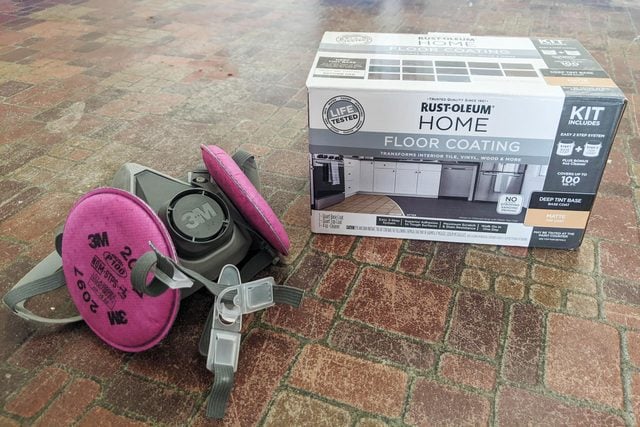
Project step-by-step (5)
Clean the floor
- This is the most important step. Your floors must be extremely clean, with no dirt or debris, before they can be painted. If not, specks of dirt will be sealed in. Take your time and be patient.
- Start by wiping down the whole floor with a water-soaked rag. If painting a large area, use a mop.
- Use a cleaning brush to scour the surface and free any stuck-on dirt. Grab a scraper tool for stubborn pieces.
- Finish the by scrubbing your floors with a cleaning agent. The Rust-Oleum Kit comes with a heavy-duty liquid cleaner that removes any remaining grease and grime.
- Use a reusable face respirator to ensure you don’t breathe in any fumes.
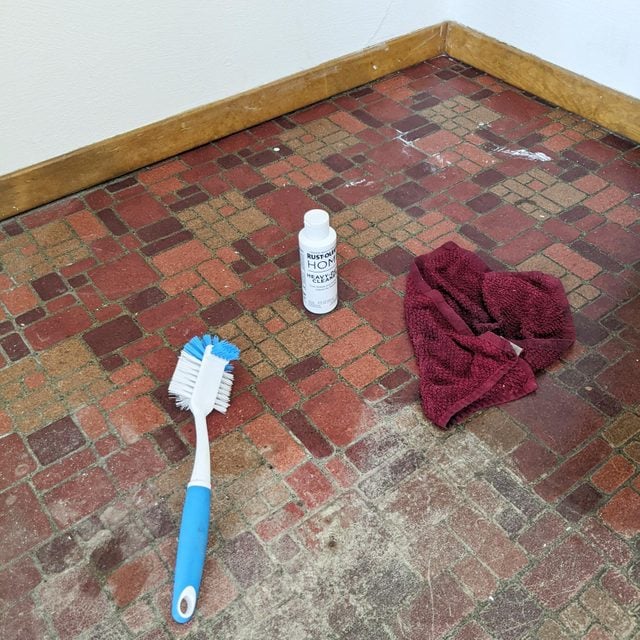
Apply painter’s tape
- Adhere painter’s tape to baseboard trim, flooring transitions, air vents or any other edges you want to protect from the paint.
- Once the tape is in place, run your finger across the bottom edge to make sure it’s firmly attached to the surface.
- This ensures the paint does not seep up behind the tape.
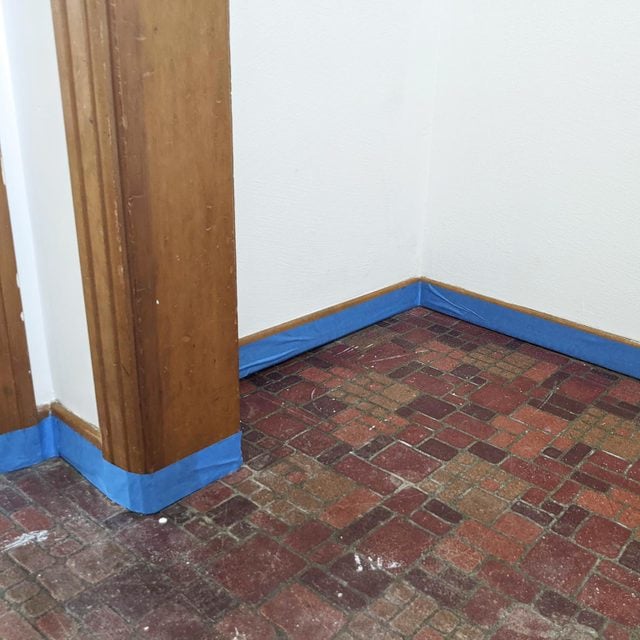
Paint base coat
- Apply the base color coat to your floor. Start by cutting in the edges with a paintbrush, then cover the brush marks with a paint roller. Continue to roll paint across the entire surface of your floor.
- I used a foam roller for a nice, even finish. You can also use a nap roller with a shorter nap that will easily glide across the smooth flooring surface.
- Focus on painting one small area at a time. The paint dries quickly, so make sure it’s evenly rolled before moving on to the next section.
- Let the base coat dry for at least six hours.
- Inspect your work and complete any necessary touch-ups. Let those dry for a couple of hours before putting on the top coat.
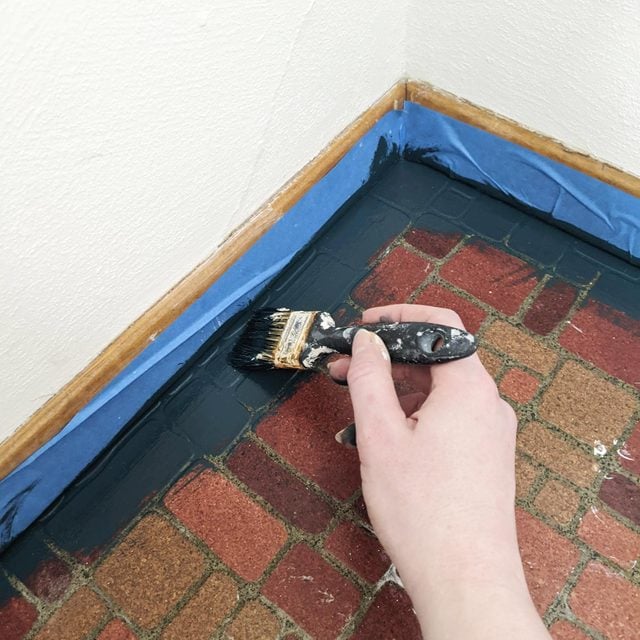
Apply top coat
- With the base coat completely dry, apply the top coat. Use the same painting technique as the base coat, working in sections and rolling out any brush marks.
- I was a little alarmed by how the top coat looks as it’s applied — bubbly and uneven. Don’t worry. It dries clear and even.
- If painting a high traffic area, consider applying two coats for added durability. I did because our mudroom is used constantly. Wait one to two hours before applying the second top coat layer.
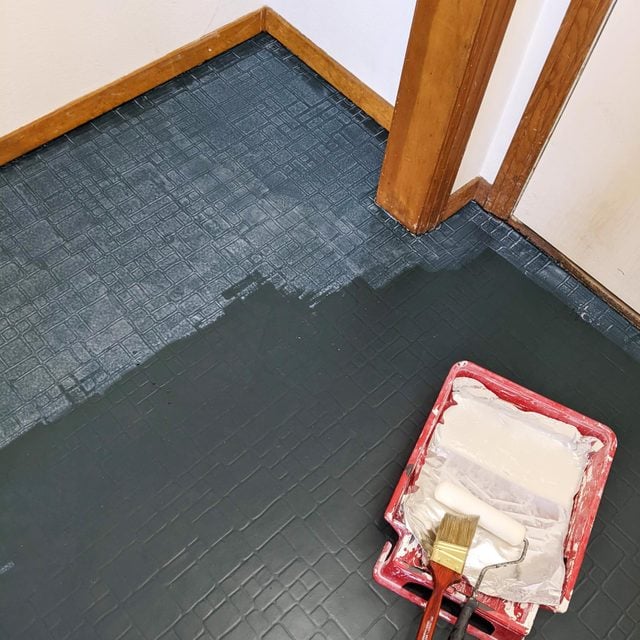
Allow floor coating to dry
- After finishing the top coat application, wait 24 hours before walking on the surface. Use caution and only allow light foot traffic at this time.
- Wait three days before putting furniture on the floor.
- After seven days, the painted surface will be fully cured and ready for normal use.
